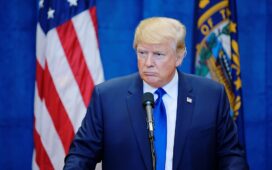UBS analysts highlighted significant downside risks to economic growth, particularly in Asia, due to potential larger-than-expected tariff announcements by the United States administration. If these tariffs are sustained, UBS predicts a considerable negative impact on global growth, which could trigger a contraction of global trade volumes by 7.5 percentage points.
Asian exporters are expected to be most affected by this tariff shock, leading to a substantial macroeconomic downturn in the region. The UBS Asia economic team forecasts that China’s nominal GDP growth for 2025-2026 will average below 4%, a stark contrast to the 9% growth rate observed in 2018-2019.
The open economies in the Association of Southeast Asian Nations (ASEAN) are also facing sizable downside risks. The foreign exchange (FX) markets are anticipated to be significantly impacted by these terms of trade shocks, especially when compared to the Euro (EUR) and Japanese Yen (JPY), amid rising recession risks in the United States.
The Chinese Yuan (RMB) is particularly in focus, as UBS models suggest that if tariffs exceeding 50% are not reduced, the currency’s trade-weighted index (TWI) could potentially weaken by 7-8%. In fixed income (FI) markets, a trend that is expected to become even more pronounced is the strengthening of disinflationary forces, which would likely continue the downward trend in regional bond yields.
UBS’s analysis indicates that sustained tariffs could lead to a challenging economic environment, with significant implications for currency and bond markets in Asia. The firm suggests a strategic position of selling Asian FX against the G3 currencies and favoring long duration in the current climate.
This article was generated with the support of AI and reviewed by an editor. For more information see our T&C.




